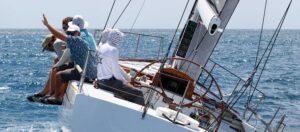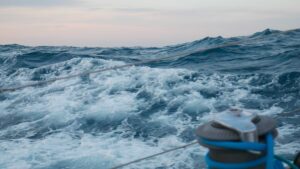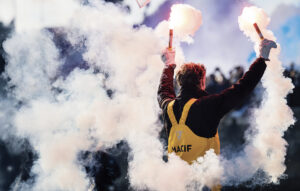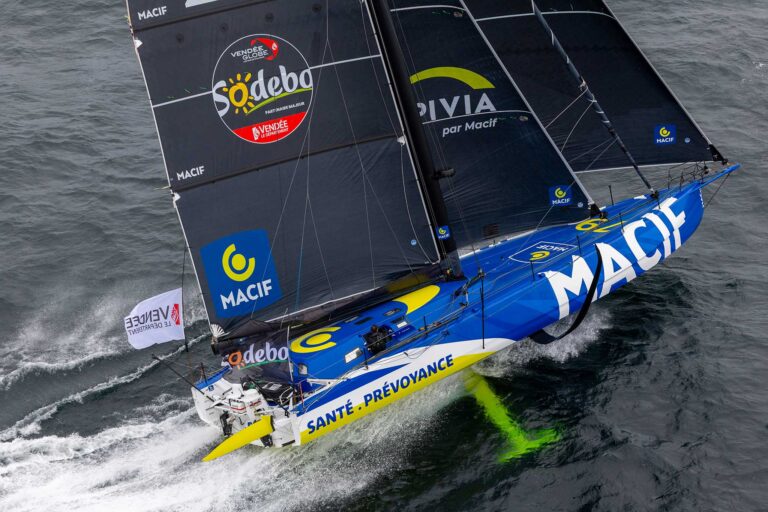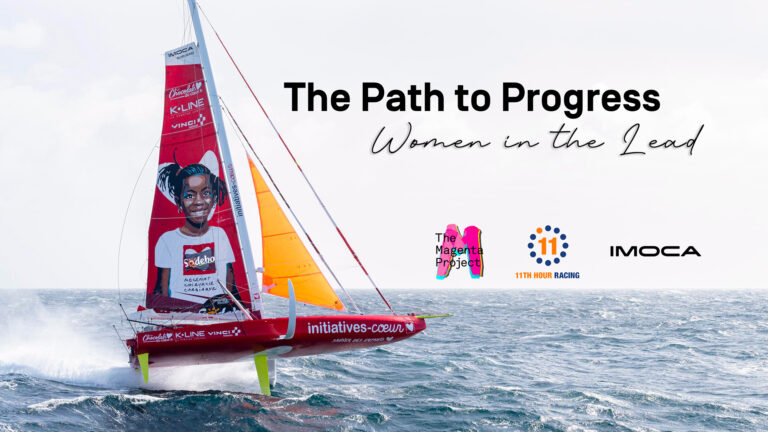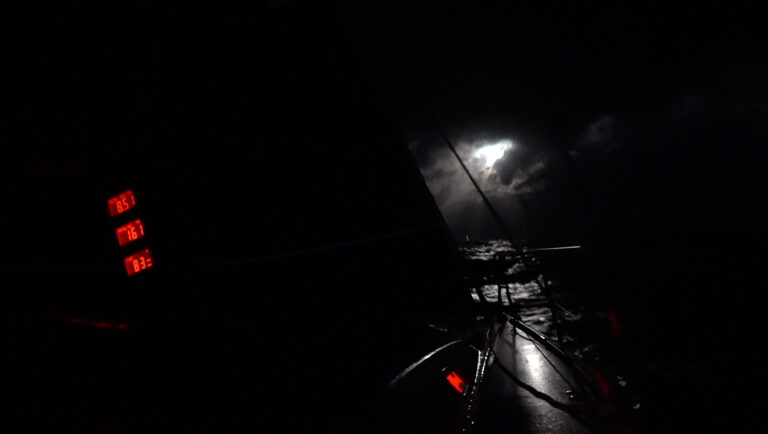
Even with—and sometimes because of—recent changes to the format, The Ocean Race is still the heart and soul of offshore racing, in my opinion. You could certainly make a case for the intensity of solo sailors lapping the planet in the Vendée Globe, but there’s something enchanting about the camaraderie, teamwork, and trust required for crewed racing. Plus, when it comes to spectating, nothing competes with the professional onboard reporters. Alicante, Spain, seems to feel the same way, pulling out all the stops to put on a massive festival of sailing last week to send off the 11 teams competing in this year’s race. Of those crews, only the main fleet of five IMOCA 60s will be sailing the full circumnavigation with seven stops around the globe.
The six VO65s will sail a modified course, only competing in the in-port races and shorter legs around Europe. This course, called the Sprint Cup, was a late decision aimed at making the race feasible for more VO65 teams. The fleet was intended to be a training class, making pathways for younger sailors and nations not typically represented in professional sailing to get involved. So, it makes sense that a shorter, less resource-intensive course would be necessary for getting as many of these teams to the start as possible.

On Sunday, the energy at the team bases was frenetic, with final weather briefings confirming that the fleet’s first test would soon be upon it—beating into upwards of 35 knots to get to Gibraltar. From there, the fleet will turn south and head to the first stopover in Cabo Verde.
“I think what we’re going to see on leg one, is that it’s going to get pretty tricky straight off the bat,” said 11th Hour Racing Team Navigator Simon Fisher before the start. “Getting out of the Mediterranean is always a challenge. You’ve got a lot of wind forecast for the Alboran Sea, Gibraltar’s always quite challenging, and then after that, I think we’ll be quite relieved to be on the open ocean for a few days.”
There’s tactical sand in the gears, also, in that Cabo Verde is not a maintenance stopover. This means that nothing is allowed on or off the boat and shore crews cannot come aboard to help with repairs. The possibility of major damage spilling over into Leg Two doubly incentivizes teams to approach Leg One conservatively.

Despite that, it didn’t take long for the race’s first casualty: Viva Mexico’s mainsail. Skipper Erik Brockmann confirmed that the crew was all safe after the failure, but that the boat would be forced to retire to the port of Almeria less than 24 hours into the race to reassess the damage.
Also in the VO65 fleet, Ambersail 2 took an ambitious tactical gamble on day one, heading straight into the blistering winds in search of better boat speed. It didn’t pay off, however, and by the time the fleet reconverged at Gibraltar, there hadn’t been any significant gains or losses. The fleet remains tight with less than 20 nautical miles separating all the boats still racing.
In the IMOCA 60 fleet, Holcim-PRB and 11th Hour Racing Team have established a lead, reaching the Strait of Gibraltar around five hours ahead of the rest of the fleet. Still, anything can happen, particularly because southwest of the strait, the prevailing winds bend counterclockwise and lighten, forcing both leading teams to tack northwards away from Cabo Verde. They are chasing down stronger wind that will hopefully allow them to tack over and then ride the breeze south. With conditions like these and so little fleet separation, it’s still anyone’s game.
To check out The Ocean Race’s tracker, click here.

